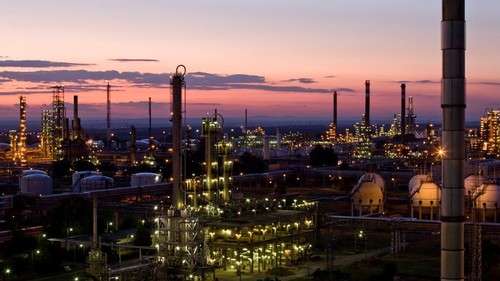
MOL Group has announced its financial and operational targets for the next five years following the publication of its "MOL Group 2030 - Enter Tomorrow" strategy. The company plans to invest at least $2bn in strategic capital expenditure between 2017 and 2021, with a focus on refining, petrochemicals, consumer services, and exploration and production. MOL aims to increase the share of valuable non-motor fuel products to above 50% by 2030 and expects its petrochemicals business to contribute $250-300m annually to its EBITDA. The company also plans to expand its market-leading service station network and improve its retail offerings.
Budapest – Following the publication of the “MOL Group 2030 – Enter Tomorrow” strategy, MOL today announced its financial and operational targets for the next five years.
MOL Group’s resilient integrated business model will continue to provide stable and robust profitability for the next 10-15 years. The substantial free cash flow generation from the core businesses shall fully cover the MOL Group 2030 strategic projects and smaller M&As.
MOL has earmarked a total of at least around USD 2bn as strategic capex for 2017-2021 related to the implementation of the new long-term strategy. This is above the annual organic capex expected at USD 1.0-1.1bn.
Refining – efficient and flexible assets
In refining MOL will continue to focus on improving efficiency and implementing the initiatives of the Next Downstream Program (2015-2017), which is set to deliver USD 500mn EBITDA improvement. As part of its long term strategy MOL targets a gradual increase of the share of valuable non-motor fuel products to above 50% by 2030 from below 30% currently. MOL intends to increase the feedstock for its petrochemical plants, whilst also taking advantage of the growing demand for such profitable products as jet fuel, lubricants and base oils. MOL will also expand its market share in LPG. MOL plans to invest around USD 80-130mn into its refineries in Hungary and Slovakia to increase the flexibility of propylene and lubricants production. In order to process the most profitable crude and to match the demand for its products, MOL intends to increase the seaborne crude intake to its landlocked refineries from the current 10% to 33% by 2030, whilst also increasing the crude basket to above 50 grades.
Petrochemicals – an industrial transformation
MOL has earmarked up to USD 1.9bn until 2021 to develop its petrochemicals business. The yield improvement of propylene and investment into attractive propylene derivatives will be the main direction for the next five years. In order to allow further diversification in the propylene value chain MOL Group will invest more than USD 500mn into its steam crackers in Hungary and Slovakia. MOL Group will also invest in propylene oxide based polyols, a high-value product applied in the automotive industry, packaging and furniture manufacturing. MOL Group would become the sole fully integrated supplier in CEE, the region which is driving the European supply growth. Moreover additional investments are being planned for another possible product entry.
Consumer services – transforming retail
MOL intends to further develop its market-leading regional service station network in the CEE and will continue to look for M&A opportunities in the supply radius of its refineries, outside the three core countries (Hungary, Slovakia, and Croatia). Building on its retail network and 10 million customer base, MOL will introduce new services and products. MOL will also modernize its service stations and will further improve and roll out its Fresh Corner concept to 700 stations by 2018. EBITDA contribution of consumer goods and services is expected to reach USD 450-500mn by 2021 and to account for more than 20% of the Group EBITDA and is set to grow further by 2030.
E&P – value creation in a low oil price environment
MOL intends to spend over USD 2bn organic capex in 2017-2021 with scrutiny on all spending. Approximately 35% will be allocated for exploration with focus on CEE, Pakistan and Norway, whilst 45% for development projects in CEE, UK, Pakistan, Kazakhstan and the Baitugan field in Russia. MOL strongly believes in the benefit of the integrated business model, which assumes Upstream oil and gas production shall sustain at least around its current production levels. However, this requires both organic and potentially inorganic investments in reserves replacement to stem the forthcoming decline beyond 2019. That said any future potential inorganic steps have to make financial sense in a low oil price environment. MOL intends to keep its competitive cost position with single-digit direct production costs (currently at USD 6.3/boe) and continues to target self-funding, sustainable and value generative E&P operations even in a low oil price environment (at or below USD 50/bbl oil price).
Zsolt Hernádi, Chairman-CEO, MOL Group commented: “Following the announcement of our long-term strategy, ‘MOL Group 2030 – Enter Tomorrow’ we are pleased to host today the Capital Markets Day to give the financial community a comprehensive update about our financial targets and the implementation of our strategy in the next five years. Relying on our integrated business model’s strong cash flow generation and our robust balance sheet, we will invest substantial funds into strategic investments to further diversify our business and increase our exposure in areas that are not dependent on the demand for motor-fuels. As a result of our industrial transformation, the first phase strategic projects in petrochemicals are expected to contribute USD 250-300mn annually to our EBITDA, while the weight of customer services is expected to exceed 20% of our total EBITDA by 2021. At the same time our strong cash flows will also be able to comfortably maintain the rising trend in dividends for our shareholders.”